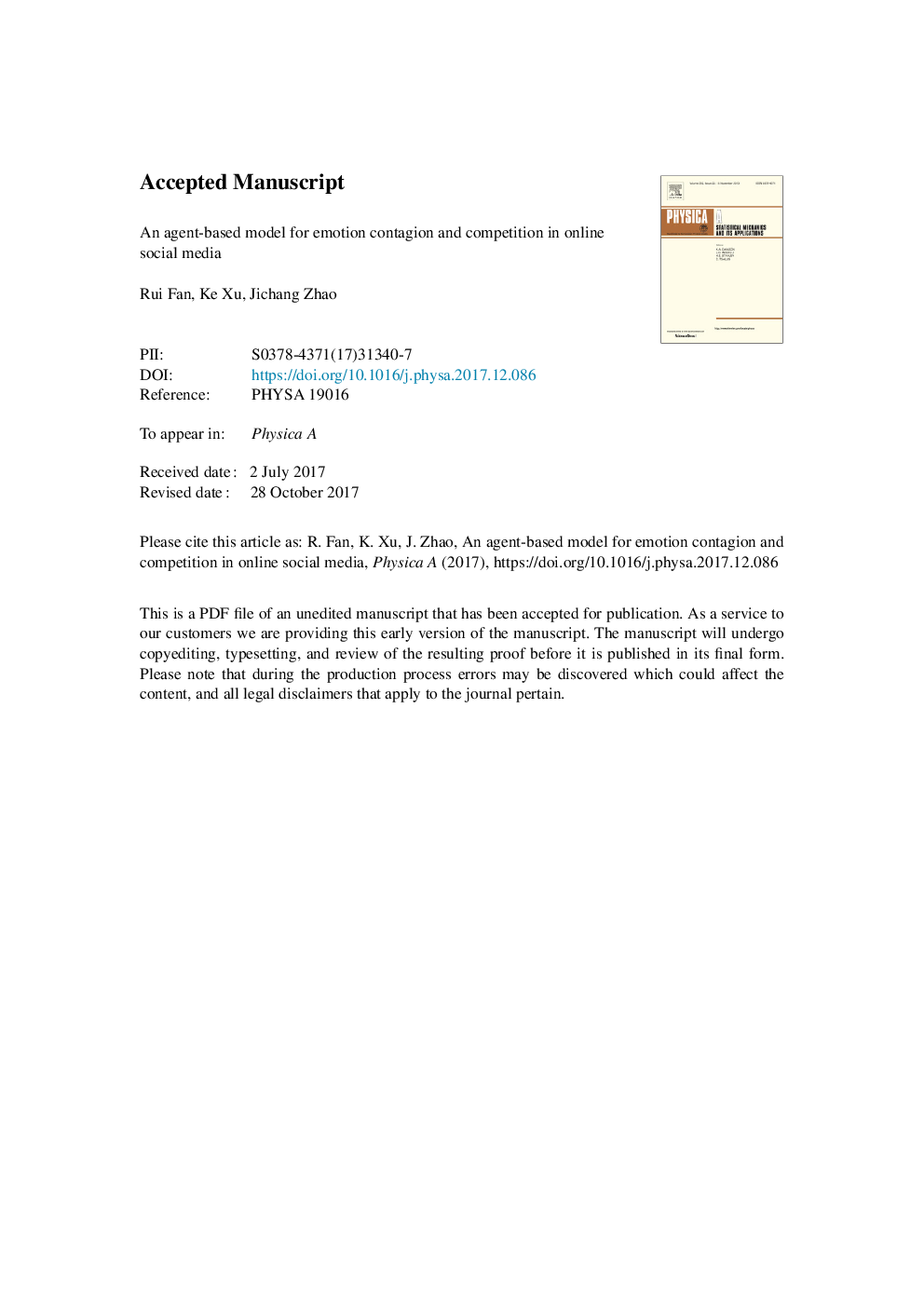| Article ID | Journal | Published Year | Pages | File Type |
|---|---|---|---|---|
| 7375960 | Physica A: Statistical Mechanics and its Applications | 2018 | 24 Pages |
Abstract
Recent studies suggest that human emotions diffuse in not only real-world communities but also online social media. However, a comprehensive model that considers up-to-date findings and multiple online social media mechanisms is still missing. To bridge this vital gap, an agent-based model, which concurrently considers emotion influence and tie strength preferences, is presented to simulate the emotion contagion and competition. Our model well reproduces patterns observed in the empirical data, like anger's preference on weak ties, anger-dominated users' high vitalities and angry tweets' short retweet intervals, and anger's competitiveness in negative events. The comparison with a previously presented baseline model further demonstrates its effectiveness in modeling online emotion contagion. It is also surprisingly revealed by our model that as the ratio of anger approaches joy with a gap less than 12%, anger will eventually dominate the online social media and arrives the collective outrage in the cyber space. The critical gap disclosed here can be indeed warning signals at early stages for outrage control. Our model would shed lights on the study of multiple issues regarding emotion contagion and competition in terms of computer simulations.
Related Topics
Physical Sciences and Engineering
Mathematics
Mathematical Physics
Authors
Rui Fan, Ke Xu, Jichang Zhao,
